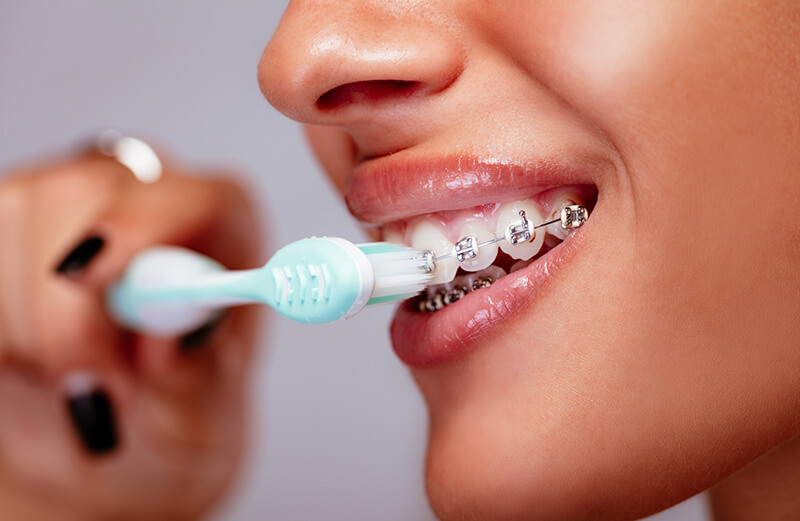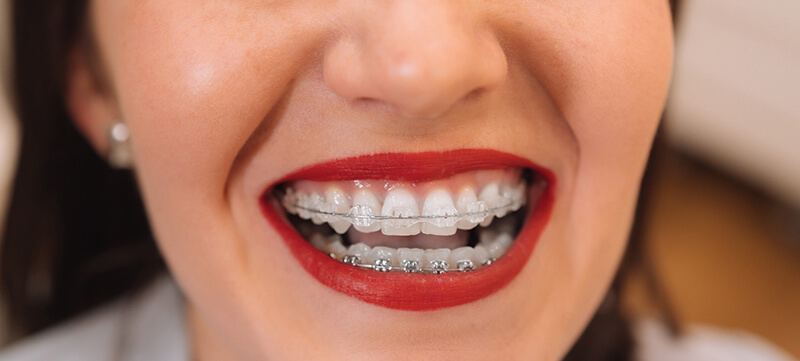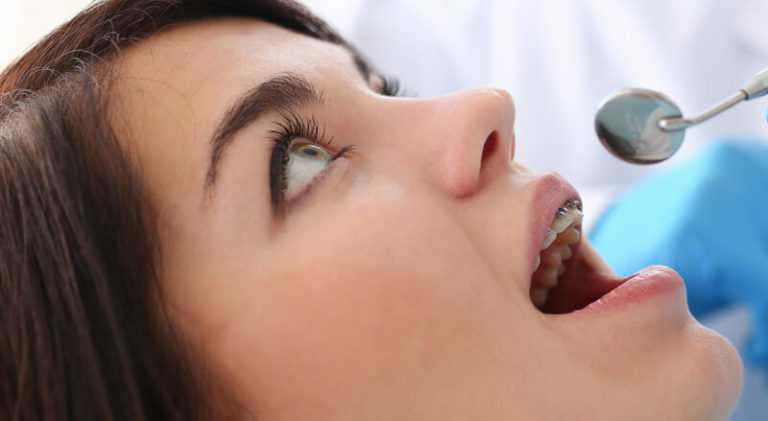Braces can help you achieve a beautiful and healthy smile. Along with increasing your confidence, they can also reduce the risk of expensive future dental procedures. It doesn’t matter how old you are, braces can positively impact your life and help you smile more.
Are Crooked Teeth Normal?
Crooked teeth in childhood can be due to genetics, malocclusion (problems with jaw alignment) or losing baby teeth to decay or trauma. Pediatric orthodontists recommend braces for children with crooked teeth as soon as possible. It reduces the risk of cavities and other dental problems associated with crooked or crowded teeth.

But adult teeth can sometimes become crooked after being straight for years. Did you have straight teeth in your 20s, but started seeing a shift in your 30s and 40s? It could be due to one or more of the following:
• Wisdom teeth pushing against molars
• Nutritional Deficiencies
• Genetics
• Oral Diseases
• Lost, Chipped, or Broken Teeth
Crooked teeth can speed up tooth decay and cavities. They make it difficult to floss between teeth and brush gumlines properly. Crooked teeth may lead to enamel erosion due to friction with other teeth. Over time, erosion will promote chipping, cracking, and dental caries.
Misaligned teeth can prevent you from chewing, talking, and smiling naturally. Even mildly crooked teeth may interfere with your ability to chew and bite down. For many, they can also put a dent in your confidence.
Consider getting braces, irrespective of the number of crooked teeth you have. Even the slightest gap can have effects. A perfect smile improves your overall health and boosts self-esteem and confidence.

Why Do People Get Metal Braces?
Ask any orthodontist, why people don’t get braces even though they need them. They will tell you that people simply don’t like the look. Metal braces can be unattractive and difficult to clean, but they get the job done.
Most people with metal braces wear them for at least a year or a year and a half to achieve the desired results. Orthodontists replace and tighten bracket-laced wires to exert more pressure on each tooth to slowly move them into the correct position.
Metal braces are temporarily bonded to teeth using a special dental adhesive. Only an orthodontist should remove metal braces after teeth have moved into their correct positions.
The wearer cannot remove metal braces by themselves. So, practicing good oral hygiene is essential for preventing tooth decay. Brushing after every meal will prevent food particles from accumulating in and on brace hardware.

After the removal of metal braces, schedule an exam and teeth cleaning. Your dentist will ensure your teeth and gums are healthy.
Invisible Braces to Straighten Crooked Teeth
Invisible braces are convenient, affordable, and as effective as metal braces in correcting mild to moderately crooked teeth. Invisalign braces are transparent, customized mouth “trays” that fit over your upper and bottom teeth.
Your orthodontist will use software to develop measurements for each aligner tray. Every two to three weeks you’ll change to a new tray that is shaped differently than the previous tray. The slight differences in the structure of each new tray will exert gentle pressure needed to shift the position of your teeth.
Unlike metal braces, Invisalign trays are removed when you eat and brush your teeth. But trays should be worn at least 22 hours each day to optimize their effectiveness. Otherwise, it could delay teeth movement.

Are Invisalign Trays Visible When You Smile or Speak?
To some degree, yes. Made of slick, transparent plastic, Invisalign trays can cause your teeth to appear glossy or extra shiny in certain light. A person standing close to you may notice the edges of your aligners if you smile broadly. It usually takes a few days to get used to wearing aligners. But after a week or two, you won’t even feel them in your mouth.
Get the flawless smile that you always wanted. Contact us today to schedule a consultation for metal braces or Invisalign tray aligners.




